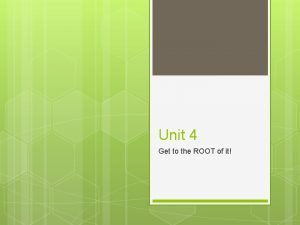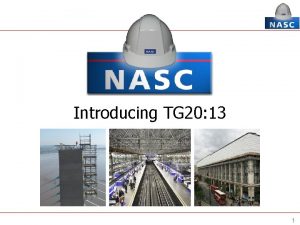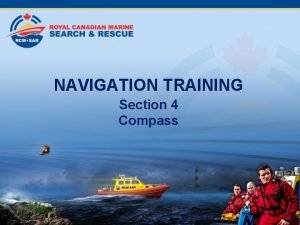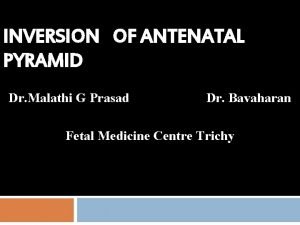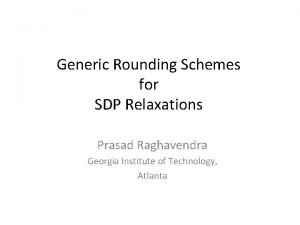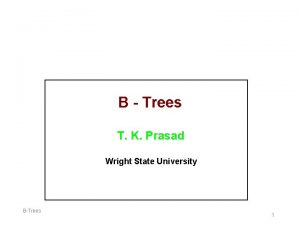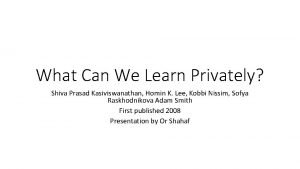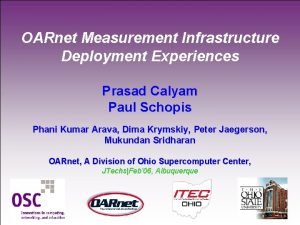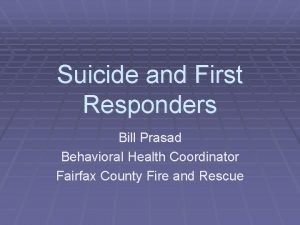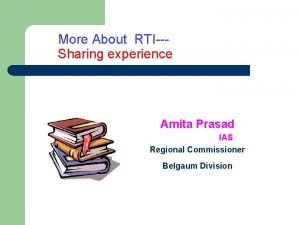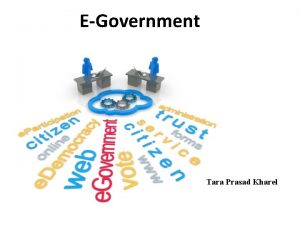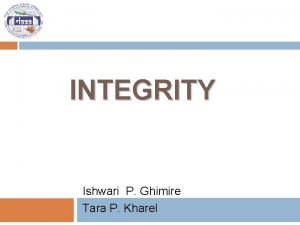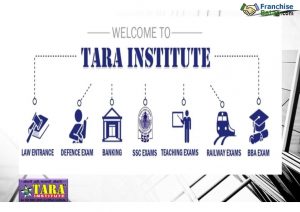EVALUATION OF TRAINING NASC Tara Prasad Kharel Contents































- Slides: 31

EVALUATION OF TRAINING NASC Tara Prasad Kharel

Contents 2 Introduction Importance Process Models 2021 -02 -24

3 2021 -02 -24

4 2021 -02 -24

What should we ask? 5 “Why Evaluate Training? ” or “Can we afford not to evaluate training? ” 2021 -02 -24

What is evaluation? 6 Process of establishing a worth of something The worth means the value, merit or excellence It is state of mind, rather than a set of techniques 2021 -02 -24

What is training evaluation? 7 Measuring the effectiveness of training. The extent to which the objectives of training have been achieved A systematic process to analyze if training programs and initiatives are effective and efficient 2021 -02 -24

8 2021 -02 -24

Why evaluation? 9 To justify the need of training programme To identify the strengths and weaknesses of training programme To provide feedback on the effectiveness of the training activities To improve the future training programme To determine the competence level of the participants To make compliance with the overall objectives of the organization 2021 -02 -24

Benefits of Evaluation 10 Improved quality of training activities Improved ability of the trainers to relate inputs to outputs Better discrimination of training activities Better co-operation between trainers and managers in the development of staff Evidence of the contribution that training and development are making to the organization 2021 -02 -24

Equip with artilleries 11 Keep three questions in mind What to evaluate? - Content When to evaluate? - Time How to evaluate? - Process/method 2021 -02 -24

Five Steps of Training Evaluation 12 Step 1: Identify the Purposes of Evaluation Step 2: Select Evaluation Method Step 3: Design Evaluation Tools Step 4: Collect Data Step 5: Analyze and Report Results 2021 -02 -24

Identify Purposes of Evaluation 13 Why do we want to evaluate training programs? � To learn from Experience for Future Improvement � To increase Accountability � To identify the strengths and weaknesses. � To compare the costs and benefits. � To test the clarity and validity of tests, cases and exercises. � To reinforce the key points made to the participants. � To determine whether the program was an appropriate solution for the specific need. � To establish a database that can assist in making 2021 -02 -24 decisions.

Select Evaluation Method (Models) 14 Donald Kirkpatrick’s model � Reaction � Learning � Behavior � Results CIRO Model 2021 -02 -24

Design Evaluation/Data Collection Tools 15 Questionnaires Surveys Tests Interviews Focus group discussions Observations Performance records 2021 -02 -24

Analyze and Report Results 16 Data Input Data Analysis � Frequency distribution � Using figures � Tables � Charts Reporting � Who needs to know what? � Forms of communicating Evaluation report 2021 -02 -24

Evaluation report outline 17 Summary Training Program Description Training Evaluation Design and Methods Findings and Results Recommendations Appendices 2021 -02 -24

18 Summary Purpose of training evaluation � Training evaluation audiences � Major findings and recommendations � Training Program Description Training Program background � Training Program goals/objectives � Training Program participants � Training Program activities � Training Evaluation Design and Methods Purpose of the training evaluation � Training evaluation designs � Data collection methods � 2021 -02 -24

19 Findings and Results � Description of how the findings are organized (e. g. , by evaluation questions, themes/issues) � Results of analyses of quantitative and/or qualitative data collected Recommendations � Recommendations conclusions for action based on these Appendices � List of participants � List of Training materials � Questionnaires, pre/post tests � Program expenditure summary 2021 -02 -24

20 2021 -02 -24

Levels of Evaluation 21 2021 -02 -24

22 2021 -02 -24

Donald Kirkpatrick’s model 23 Reaction level evaluation – Immediate reaction - How was the training overall? (Effectiveness) Learning level evaluation - What knowledge and abilities did participants learn at the training? Performance/ behaviour level evaluation How have participants applied the skills they learned? Impact level evaluation - What was the effect on the organization? 2021 -02 -24

Reaction Level Evaluation 24 What to evaluate? � Overall impression of the training programme (objectives, contents, resource persons, methodologies, training materials and aids, logistic support, food, accommodation etc. ) When to evaluate? � Generally, at the end of training programme � Mid-way of the training programme How to evaluate? � Questionnaire, general discussion, one-to-one q/a 2021 -02 -24

25 2021 -02 -24

Learning Level Evaluation 26 What to evaluate? � The extent of which the learning was transferred – Knowledge, skills etc. How to evaluate? Pre/post test � Learning test/written test � Performance test � When to evaluate? At the end of training programme � Mid-way of training programme � 2021 -02 -24

27 2021 -02 -24

Performance Level Evaluation 28 What to evaluate? � When to evaluate? � Changes of job behaviour/performance because of training After 6 months How to evaluate? Observation � Interview with the participant/immediate boss � Using checklist of work procedure � Interview with the stakeholders � Performance evaluation � 2021 -02 -24

Impact Level Evaluation 29 What to evaluate? � When to evaluate? � Measuring the effects of performance of trainees on efficiency of organisation After 1 – 2 years How to evaluate? Interview � Observing � Control group � Opinion survey � 2021 -02 -24

Finally we agree to ask 30 “Can we afford not to evaluate training? ” 2021 -02 -24

31 The Kirkpatrick Training Evaluation Model Thank You 2021 -02 -24
 Kumar raj kharel
Kumar raj kharel Inmultirea animalelor
Inmultirea animalelor Vit and viv root words
Vit and viv root words Etymology 101
Etymology 101 Tg20 compliance sheet
Tg20 compliance sheet Birdcage scaffold tg20
Birdcage scaffold tg20 Clovis unified special education
Clovis unified special education C d m v t
C d m v t Dr annie prasad
Dr annie prasad Sudhakar prasad
Sudhakar prasad Srinivas prasad md
Srinivas prasad md Edamana prasad iitm
Edamana prasad iitm Prasad gourineni md
Prasad gourineni md Malathi prasad
Malathi prasad Vanessa prasad
Vanessa prasad Pochampalli lesson
Pochampalli lesson Dr. vasudeva prasad atluri
Dr. vasudeva prasad atluri Prasad raghavendra
Prasad raghavendra Lawrence prasad
Lawrence prasad Viji prasad
Viji prasad Tk wright
Tk wright Ramananda prasad
Ramananda prasad What can we learn privately
What can we learn privately Gaura devi
Gaura devi Chipko movement quotes
Chipko movement quotes Astha prasad
Astha prasad Prasad calyam
Prasad calyam Vanessa prasad permaul
Vanessa prasad permaul Vanessa prasad permaul
Vanessa prasad permaul Rachit prasad
Rachit prasad Bill prasad
Bill prasad Amita prasad ias
Amita prasad ias


